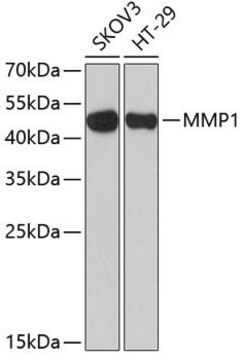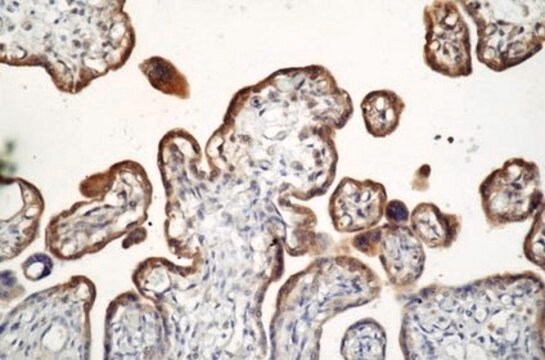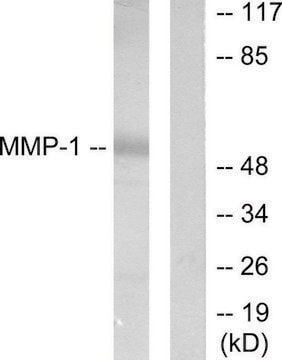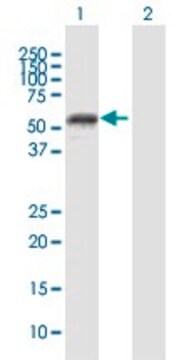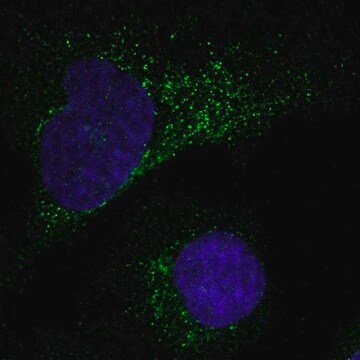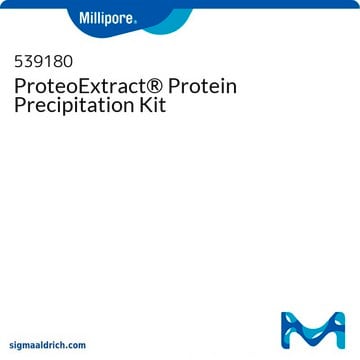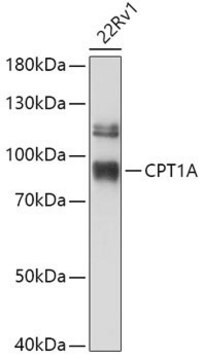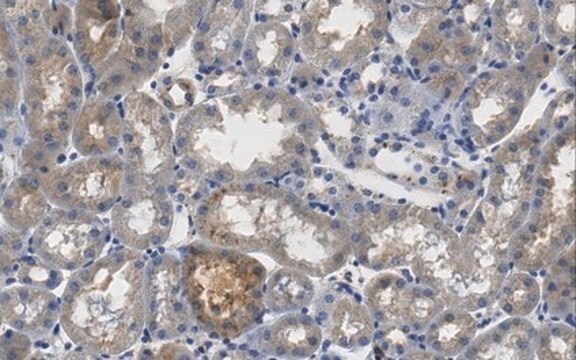IM35
Anti-MMP-1 (Ab-1) Mouse mAb (41-1E5)
liquid, clone 41-1E5, Calbiochem®
About This Item
Polecane produkty
pochodzenie biologiczne
mouse
Poziom jakości
forma przeciwciała
purified antibody
rodzaj przeciwciała
primary antibodies
klon
41-1E5, monoclonal
Postać
liquid
zawiera
≤0.1% sodium azide as preservative
reaktywność gatunkowa
human
spodziewany brak reakcji z
bovine
producent / nazwa handlowa
Calbiochem®
warunki przechowywania
OK to freeze
avoid repeated freeze/thaw cycles
izotyp
IgG2a
Warunki transportu
wet ice
temp. przechowywania
−20°C
docelowa modyfikacja potranslacyjna
unmodified
informacje o genach
human ... MMP1(4312)
Opis ogólny
Immunogen
Zastosowanie
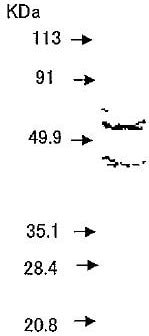
Frozen sections (see application references)
Immunoblotting (1 g/ml)
Paraffin sections (2.5 g/ml, pressure cooker pre-treatment required)
Opakowanie
Ostrzeżenie
Postać fizyczna
Rekonstytucja
Inne uwagi
Stetler-Stevenson, W.G., et al. 1993. FASEB7, 1434.
Zhang, J., et al. 1993. Clinica Chimica Acta.219, 1.
Woessner, J.F. 1991. FASEB5, 2145.
Liotta, L.A. and Stetler-Stevenson, W.G. 1990. in Seminars in Cancer Biology, ed. M. M. Gottesman. Vol. 1; 99-106.
Informacje prawne
Not finding the right product?
Try our Narzędzie selektora produktów.
Kod klasy składowania
12 - Non Combustible Liquids
Klasa zagrożenia wodnego (WGK)
WGK 2
Temperatura zapłonu (°F)
Not applicable
Temperatura zapłonu (°C)
Not applicable
Certyfikaty analizy (CoA)
Poszukaj Certyfikaty analizy (CoA), wpisując numer partii/serii produktów. Numery serii i partii można znaleźć na etykiecie produktu po słowach „seria” lub „partia”.
Masz już ten produkt?
Dokumenty związane z niedawno zakupionymi produktami zostały zamieszczone w Bibliotece dokumentów.
Nasz zespół naukowców ma doświadczenie we wszystkich obszarach badań, w tym w naukach przyrodniczych, materiałoznawstwie, syntezie chemicznej, chromatografii, analityce i wielu innych dziedzinach.
Skontaktuj się z zespołem ds. pomocy technicznej